Forums
- Forums
- Duggy's Reference Hangar
- Luftwaffe Library
- Blohm & Voss Bv 155
Blohm & Voss Bv 155
Post a reply
- Go to Previous topic
- Go to Next topic
- Go to Welcome
- Go to Introduce Yourself
- Go to General Discussion
- Go to Screenshots, Images and Videos
- Go to Off topic
- Go to Works in Progress
- Go to Skinning Tips / Tutorials
- Go to Skin Requests
- Go to IJAAF Library
- Go to Luftwaffe Library
- Go to RAF Library
- Go to USAAF / USN Library
- Go to Misc Library
- Go to The Ops Room
- Go to Made in Germany
- Go to Campaigns and Missions
- Go to Works in Progress
- Go to Juri's Air-Raid Shelter
- Go to Campaigns and Missions
- Go to Works in Progress
- Go to Skinpacks
- Go to External Projects Discussion
- Go to Books & Resources
-
9 years agoSat May 14 2016, 02:45am
 Main AdminThe origins of the Blohm & Voss Bv 155 lay in a meeting held at the Messerschmitt's Augsburg plant in May 1942 to discuss the "Special High Altitude Fighter". Both Messerschmitt and Fock-Wulf expressed interest in developing a special high altitude fighter, Messerschmitt had already done some design work on a related project. Messerschmitt's preliminary study, known as the Bf 109 ST, which had been allocated the official RLM 8-series aircraft designation Me 155. The number 155 had previously been assigned to the Klemm firm but since it had not taken up the number the RLM reassigned it to Messerschmitt. At the same time, numbers 152, 153 and 154, which had also been allocated to Klemm but not used, were reassigned to Focke-WuIf. The original Me 109 ST was advanced in three variants (version A) one called for a carrier/aircraft fitted with the DB 605, while the 2nd version called for a similar fighter powered by the high altitude DB 628. In order to relieve his already over committed design bureau and to speed development, Messerschmitt decided to transfer the Me 155B to Paris. Due to various problems work progressed only slowly throughout the remainder of 1942. By early 1943 things were starting to go wrong with the project, whares Fock-Wulf were progressing well with their Ta 152, little had been achieved with the Me 155B. During the first half of 1943, Messerschmitt's design engineers had evolved basic parameters of an (extreme high altitude fighter) design study under the company designation Me P1091. By mid 1943 the Messerschmitt people were vacillating as ever pursuing the Me 209H in competition with the Ta 152H and turning there Me P1091 in to the Me 155B.
Main AdminThe origins of the Blohm & Voss Bv 155 lay in a meeting held at the Messerschmitt's Augsburg plant in May 1942 to discuss the "Special High Altitude Fighter". Both Messerschmitt and Fock-Wulf expressed interest in developing a special high altitude fighter, Messerschmitt had already done some design work on a related project. Messerschmitt's preliminary study, known as the Bf 109 ST, which had been allocated the official RLM 8-series aircraft designation Me 155. The number 155 had previously been assigned to the Klemm firm but since it had not taken up the number the RLM reassigned it to Messerschmitt. At the same time, numbers 152, 153 and 154, which had also been allocated to Klemm but not used, were reassigned to Focke-WuIf. The original Me 109 ST was advanced in three variants (version A) one called for a carrier/aircraft fitted with the DB 605, while the 2nd version called for a similar fighter powered by the high altitude DB 628. In order to relieve his already over committed design bureau and to speed development, Messerschmitt decided to transfer the Me 155B to Paris. Due to various problems work progressed only slowly throughout the remainder of 1942. By early 1943 things were starting to go wrong with the project, whares Fock-Wulf were progressing well with their Ta 152, little had been achieved with the Me 155B. During the first half of 1943, Messerschmitt's design engineers had evolved basic parameters of an (extreme high altitude fighter) design study under the company designation Me P1091. By mid 1943 the Messerschmitt people were vacillating as ever pursuing the Me 209H in competition with the Ta 152H and turning there Me P1091 in to the Me 155B.
Contrary to what was thought at Blohm & Voss , Messerschmitt had actually done little work on the Me P1091. Over the next few weeks the Blohm & Voss team began to discover this shortcoming for themselves. The Blohm & Voss engineers were not impressed with Messerschmitt's drawings, and it was only a question of how much had to be changed. It soon became obvious that almost every system of the Me 155B including the wings, fuselage, tail assembly, accommodation of the turbosupercharger and landing gear, were inadequate. In September 1943 it was decided to construct 5 prototypes, however soon after, Blohm & Voss decided that the still unresolved design problems needed fixing. By late 1943 these had still not been fixed, at a high powered meeting to address these problems the Messerschmitt people didn't show up. The meeting was finally held, but with little to show for all the effort. Blohm & Voss were also later asked for more workers again to get the project moving. As late as November 1943 there were still changes being made to the design or weapons fit. . Another of the changes Blohm & Voss were contemplating was to abandon the complex series of first eight, and then four, underwing radiators favoured by Messerschmitt for two large scoop-type units to be mounted above the wings. A mock-up of the design was built and tested at the LFA wind but, by this time, everyone at Blohm & Vess was fed up with the lack of cooperation coming from Messerschmitt. Late in 1943 Blohm & Voss formally advised the RLM of their problems with Messerschmitt and implored them to intervene.
With the official transfer of the Me 155B to the Blohm & Voss firm, the designation of the aircraft was changed to the BV 155A. Finally freed of the constraints imposed by Messerschmitt, Blohm & Voss immediately set about to re-evaluate the new fighter. After a thorough critical review of the BV 155A, the Blohm & Voss engineers came to the conclusion that it would be less costly and more sensible if they dropped this design and instead, went directly to the BV 155B. Which they had in the meantime evolved. The most obvious feature of the B-series was the re-positioning of the two large scoop radiators from above to below the wings. This was done to achieve better stability and to improve airflow to the units. The starboard radiator was to cool engine lubricants, while the port radiator serviced the oil heat exchanger, aftercooler and intercooler. By the spring of 1944, all major systems had been designed, the question of engine and armament resolved and plans were made to begin immediate construction of the first of the five prototypes
By mid 1944 it was proposed to have all 5 Bv155 prototypes completed by mid 1945. Meanwhile Blohm & Voss had been working on the Bv P205, this had a different layout to the Bv 155B originally intended to have the 4,000 hp 24-cylinder, water-cooled, Argus As 413. Due to the expected un-availability of this engine the Bv P205 in its final form it was to be powered by the DB 603U. The BV P205 eliminated the two large wing-mounted radiators, shortened the wing span and reduced the landing gear wheel track. An annular radiator was incorporated in the nose, while two moderately large radiator air scoops were positioned on either side of the fuselage, near the cockpit. Clearly Blohm & Voss thought that the Bv P205 had potential, with reducing the number of radiators and changing the engine cooling system could save weight & reduce drag. This new aircraft design was approved and the BV 155C designation given. There was now a need for more prototypes to be built, V1 to V3 were to be B series aircraft with V4 to V7 being Bv 155C prototypes. The first Bv 155B prototype was expected to be ready in December 1944. Then later it was decided By Blohm & Voss & the RLM to build only 2 Bv 155B prototypes & then go straight to the C series. Early in August 1944 the full size mock-up was ready for inspection, this being satisfactorily completed the construction of the first prototypes was pushed on as fast as possible.
By September 1944 a revised schedule had the Bv 155BV1 ready in December 1944 & V2 ready in January 1945, at the same time the number of C series pre-production aircraft was raised to 30. During October 1944 the Bv 155B was reclassified as an "Escort Fighter" this was possibly because at this stage there was a massive reappraisal of all aircraft production going on in the German aircraft manufacturing industry with many production orders being curtailed or cancelled. During this period the V1 & V2 prototypes were nearing completion , with the V1 prototype being completed just prior to Christmas 1944. After various vibration tests, the first flight was set for mid January 1945. At about this stage work was still being done on finalising the layout for the Bv 155C meanwhile the BV 155 V2 was about half finished, while the BV 155 V3 was only 30 percent complete. Early in January 1945, meetings were held in an effort to determine how and where production of the BV 155 could be decentralised . It was proposed that the Focke-WuIf and Dornier firms should become involved. However, both of these manufacturers were already heavily committed with their own programs and little hope was placed on either coming on line until at least March 1945. Finally on Monday, February 5, 1945, the BV 155 V1, W.Nr. 360051, was handed over to the flight section at Blohm & Voss
Meanwhile, Blohm & Voss officials decided to halt all further work on the incomplete BV 155 V3, and to concentrate all efforts toward completion of the first C-series prototype, the BV 155 V4. Meanwhile it was time for the maiden flight of the Bv 155B V1 the date was February 8 1945. This first flight was cut short by leaking coolant, but luckily the Bv 155B landed without further incident. Working around the clock, the necessary repairs and modifications were completed and on February 10, 1945, a second flight was carried out, this time without a repeat of earlier coolant leaks. However, the test pilot noted the take-off was difficult due to the soft, muddy conditions of the grass field. This was the result of rain over the previous two days. It was also noted that aircraft's exceptionally wide undercarriage track (21 ft 11 in 6702 mm) was the chief reason for the aircraft's tendency to ground-loop, even during perfectly soft landings. There was also a problem with the main wheel doors not closing properly, this was a potentially serious problem as it could obstruct the air flow through the wing mounted radiators. Low cloud also prevented any high speeds being attained on this flight, only being able to attain a max speed of 218 mph landing approach speed was a modest 106 mph. After the second test flight, the BV 155 V1 was rolled back in hangar 2 where additional work was carried out to correct the problems. In the next two weeks plans were made to carry out tests using special flight measuring equipment to be carried onboard and operated by the pilot. It was planned to fit a semi-automatic camera to record certain flight conditions. A total of forty frames were planned with which it was hoped that much additional flight information could be recorded. Then on February 20, 1945, a secret directive from OKL headquarters in Berlin to Blohm & Voss was received advising them that the BV P212 and BV 155 had been included in the current Emergency Program. Thursday, February 21,1945, was a busy one for the Flight Mechanics Section at Blohm & Voss as they rushed to complete vibration tests with the BV 155 V1's engine lubricating system in anticipation of the next test flight. This was to be on Monday, February 26, 1945. With the aircraft's gross weight now at 13,007 lbs (5,900 kg), the Bv 155 V1's third take-off was flawless, despite the very soft condition of the field. The pilot had no trouble keeping the aircraft on its course as he sped across the field and left the ground. As in the two previous flights, the short take-off run was impressive. After take off there was more trouble with the main gear doors not closing properly, eventually on the third attempt the gear was fully stowed, but in the process additional damage had been done to the wheel doors
Fortunately, coolant temperatures remained constant between 225 and 230 degrees F (107~110 Deg C), which were within permissible limits. This third test flight was relatively uneventful but upon Postflight inspection, it was revealed that there had been another fluid leak in the drain tank, and a crack in the wing spar near the aileron lever weld & the main gear doors. With the arrival of March 1945, Blohm & Voss busied itself with making repairs and modifications to the BV 155 V1 while pushing ahead toward completion of the BV 155 V2. At Blohm & Voss on March 7, 1945, it was decided that the BV 155 V1 would log at least 10 flight hours in March and 15 hours in April, with most flights to be carried out at astonishing altitudes of between 45,933 and 52,493 feet (14-16 km). It was further proposed that the BV 155 V2, W.Nr. 360052, would be finished and flight-cleared in March, with up to 10 hours of test flights scheduled for April 1945. Over the next month work was continued on the second prototype, whilst repairs and minor modifications to the first prototype. With so many unresolved problems associated with the forth prototype, the first machine of the C-series, there was little progress toward construction and only a few items of hardware were built. There is no surviving record of additional test flights carried out with the first prototype prior to the arrival of the British. It is very doubtful any were made. On May 3, 1945, the city of Hamburg surrendered to the British.
All German personnel were ordered out of all Blohm & Voss facilities without exception. For the entire month of May no German was allowed in the prohibited area. British authorities were keenly interested in the aircraft and facilities they found at the Blohm & Voss plant. The British lost little time declaring which items were to be shipped to Britain for examination. Pushing open the doors to Hangar 2 Where the BV 155 V1 had been kept, they made immediate plans to transfer the prototype to England. In Hangar 1 they discovered the still incomplete BV 155 V2, while the mothballed BV 155 V3 was quickly located outside Hangar 1.
Determining what became of the three BV 155 prototypes once they fell into British hands is quiet complex and has led to much confusion. It would appear that the Bv 155BV1 was airworthy when captured. It was test flown by the British after the application of national insignia & the serial PN820? Apparently the British pilot experienced an in-flight problem which forced him to make an emergency landing. In the ensuing crash-landing the prototype was damaged and was written off. The exact nature of the accident remains unclear.But, in any case, the British, were deprived of the only airworthy example of the BV 155B. The British then quickly collected all components of the incomplete BV 155 V2 and shipped them to the Royal Aircraft Establishment (RAE) at Farmborough, England. During the exhibition of captured German aircraft held at the end of October and running up to November 9,1945.
The assembled but still incomplete second prototype was placed on indoor public display in "A" Building. The incomplete third prototype, which in the meantime had also been delivered to RAE Farmborough, was transferred to No. 47 M.U. where it was prepared for transfer to the United States. There was some thought put into completing the second prototype & testing it but like other such projects at the end of the war, but budget cuts stopped them. After the third prototype was shipped to the USA where it was given the designation FE-505. It was then held in storage at Wright Field's Air Technical Services Command for a number of years. It was then given a T2 number, T2-505 and placed in indefinite storage at the National Air and Space Museum's Paul E. Gerber Restoration Facility at Silver Hill, Maryland.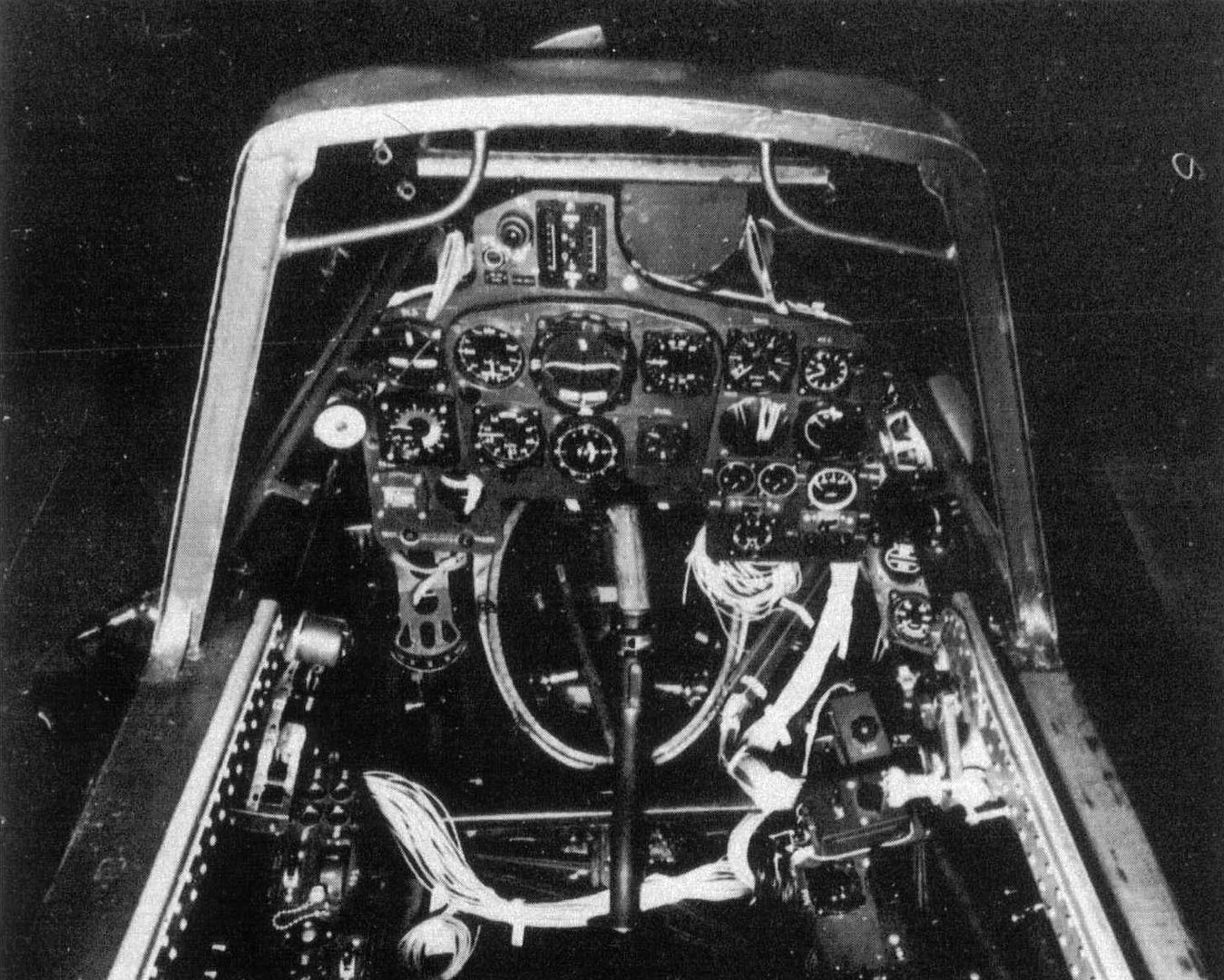
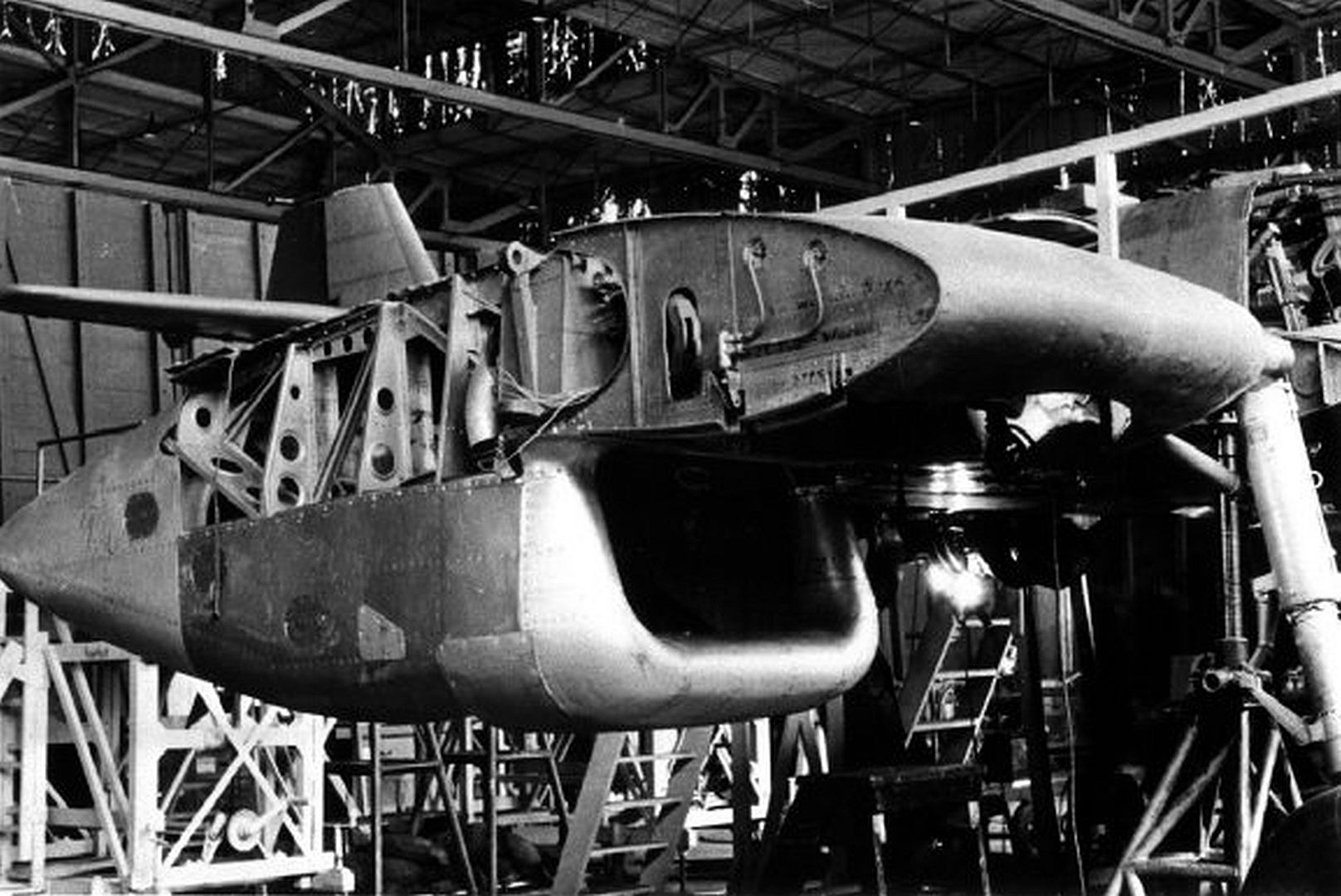
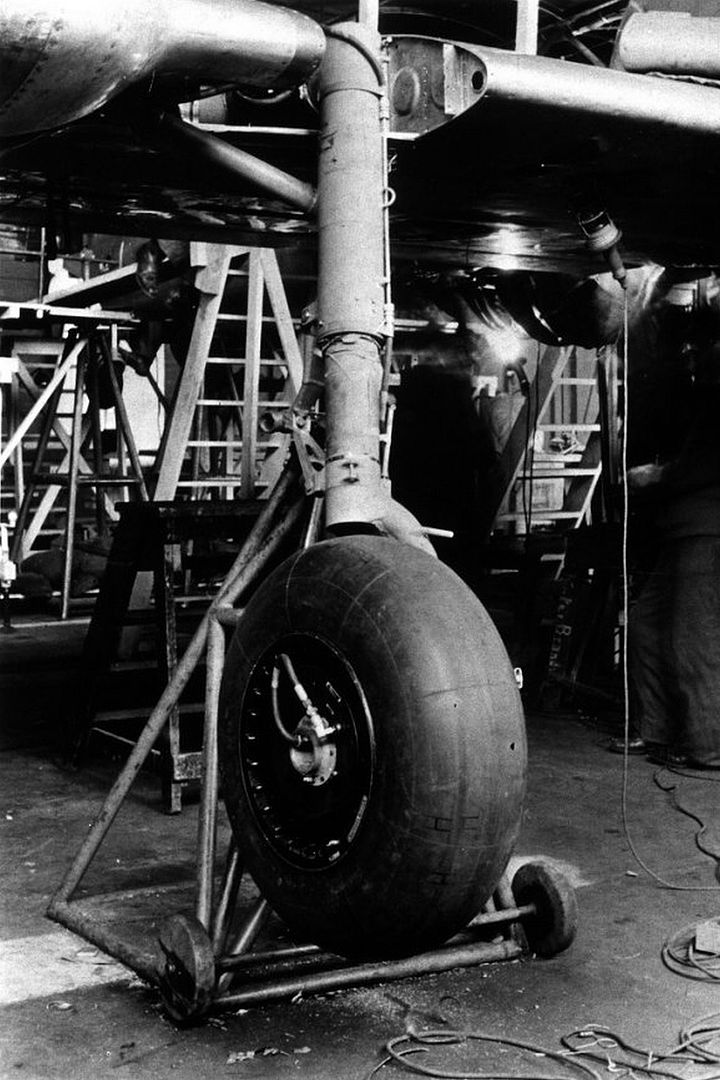
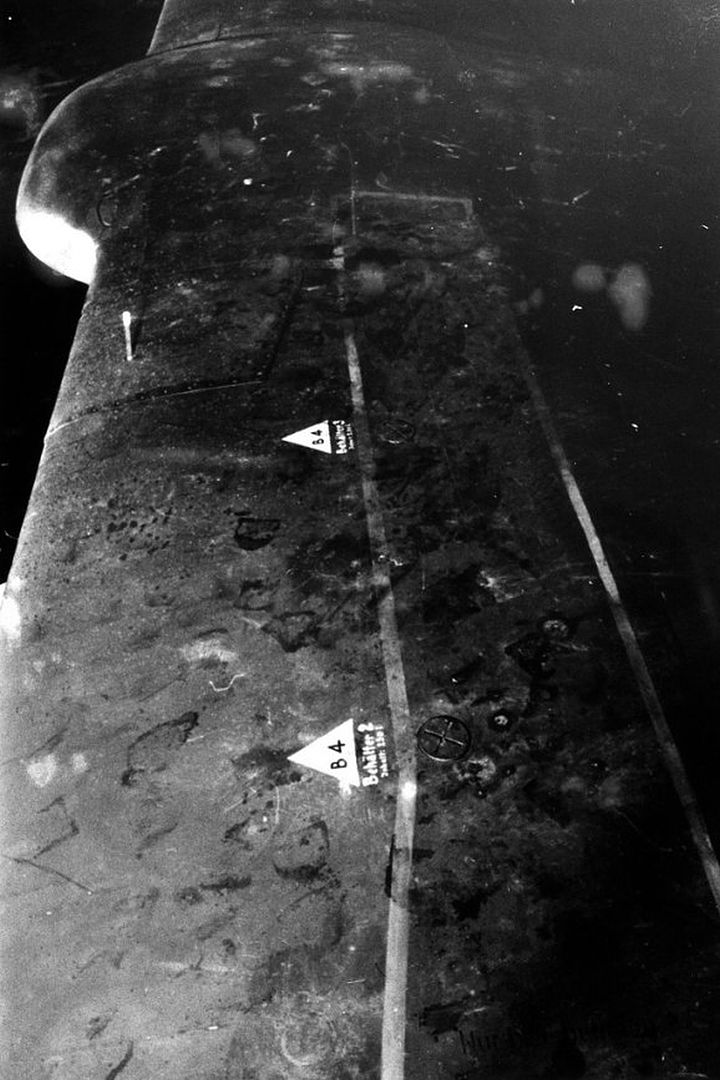
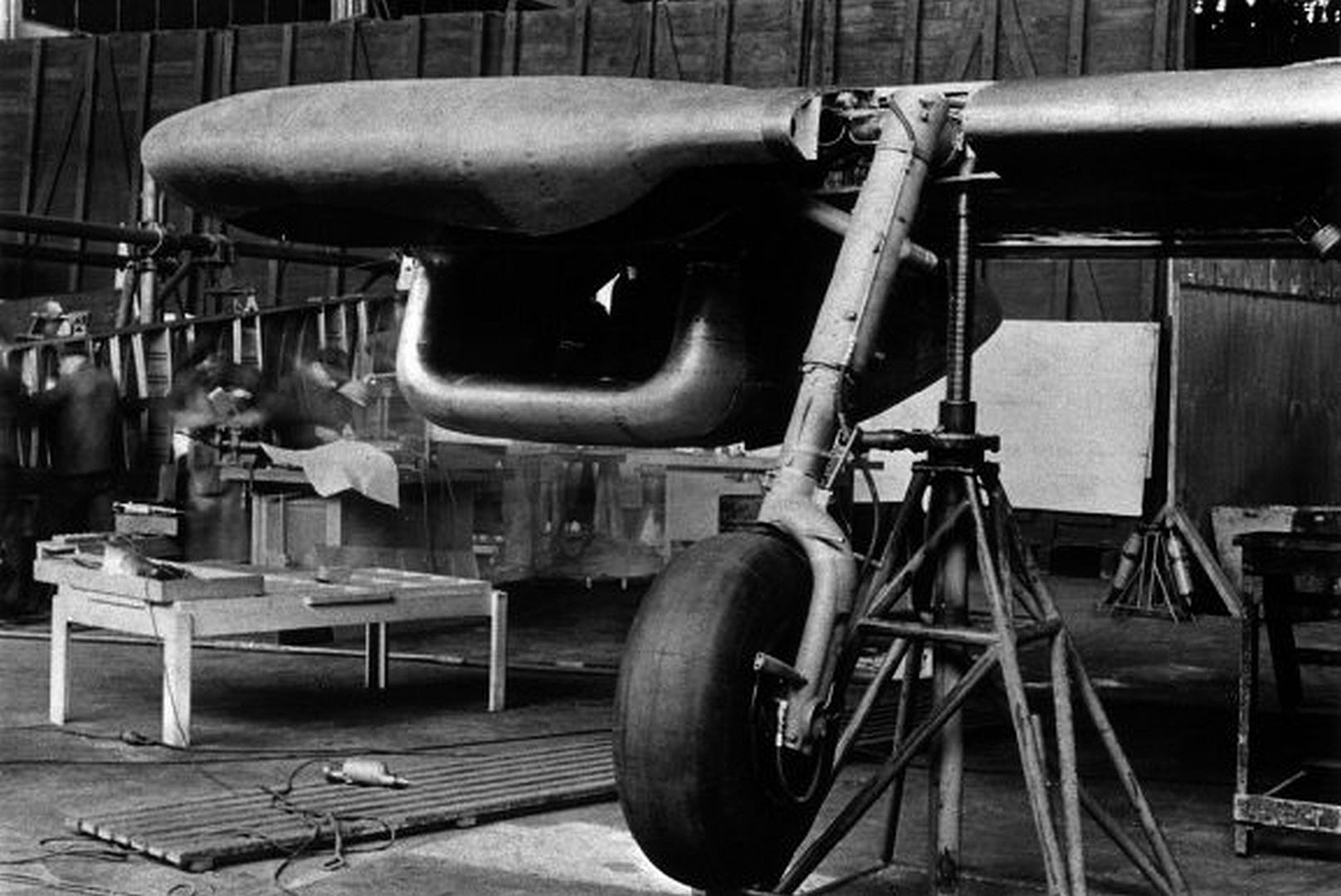
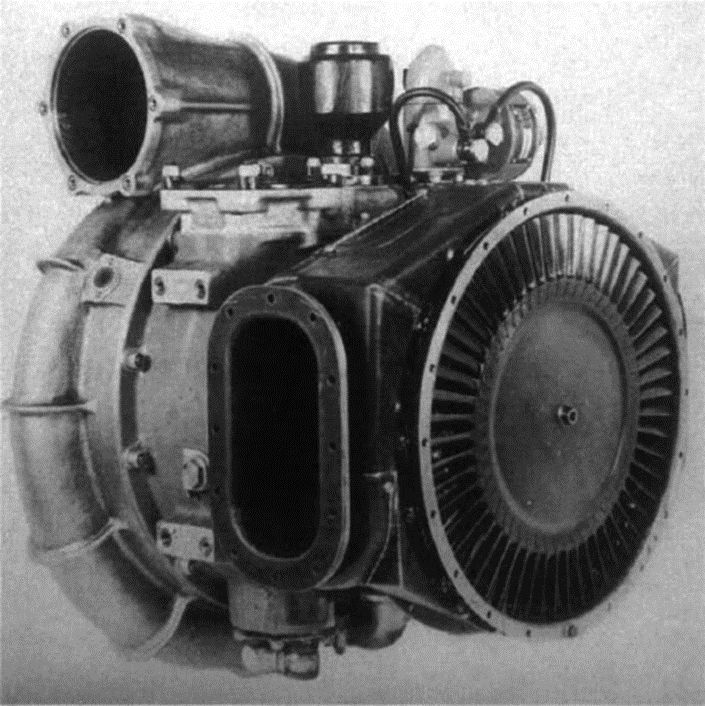

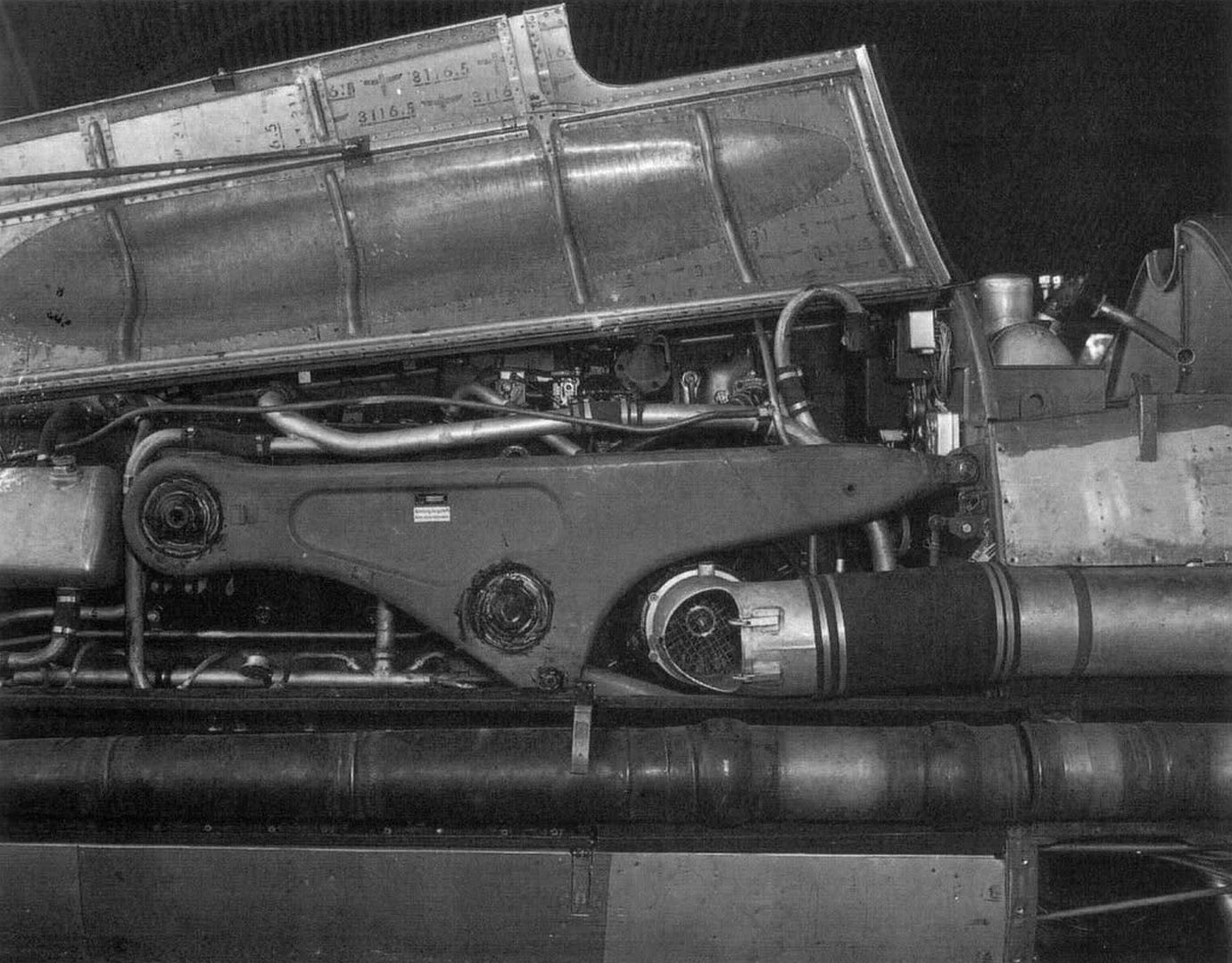
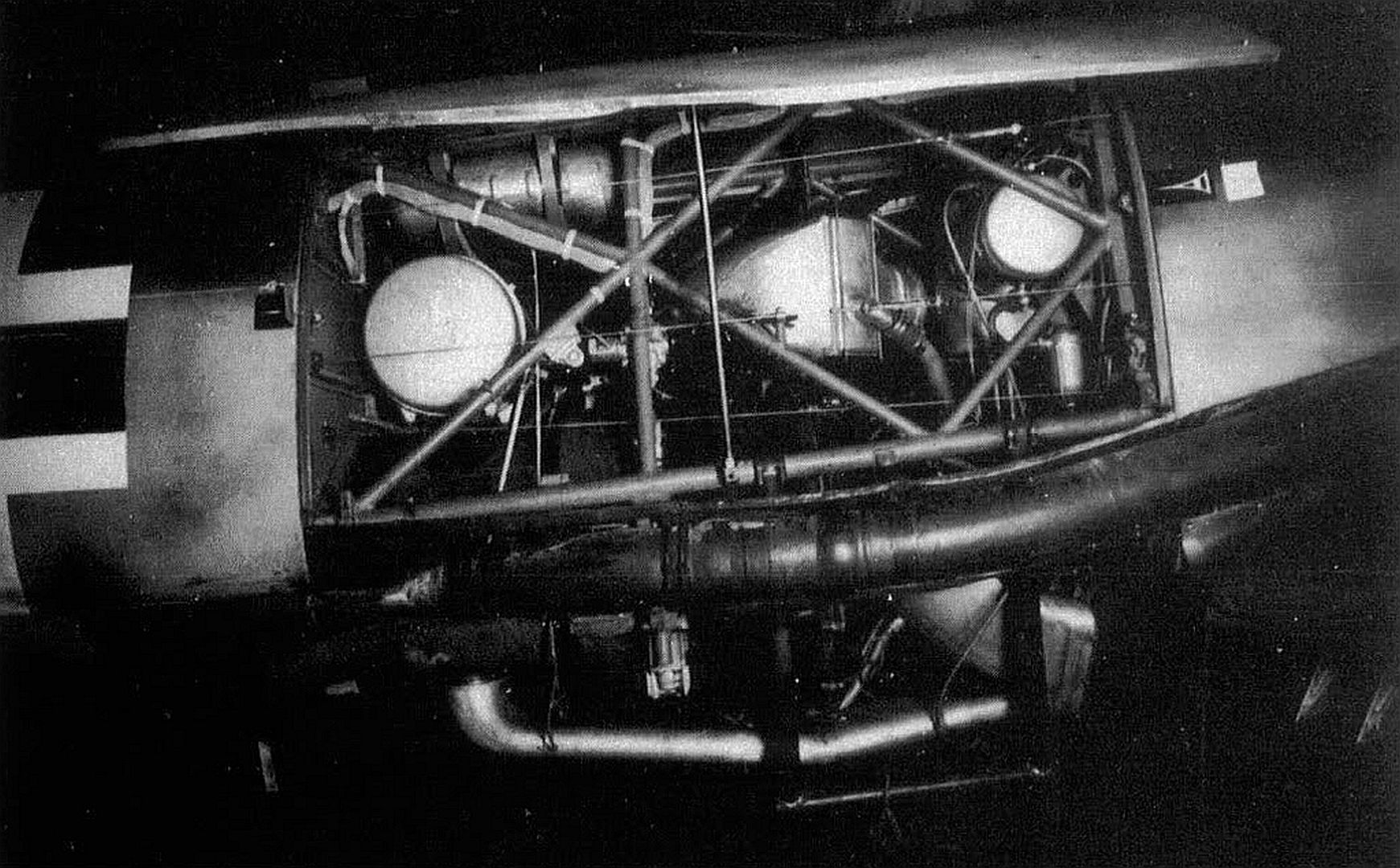
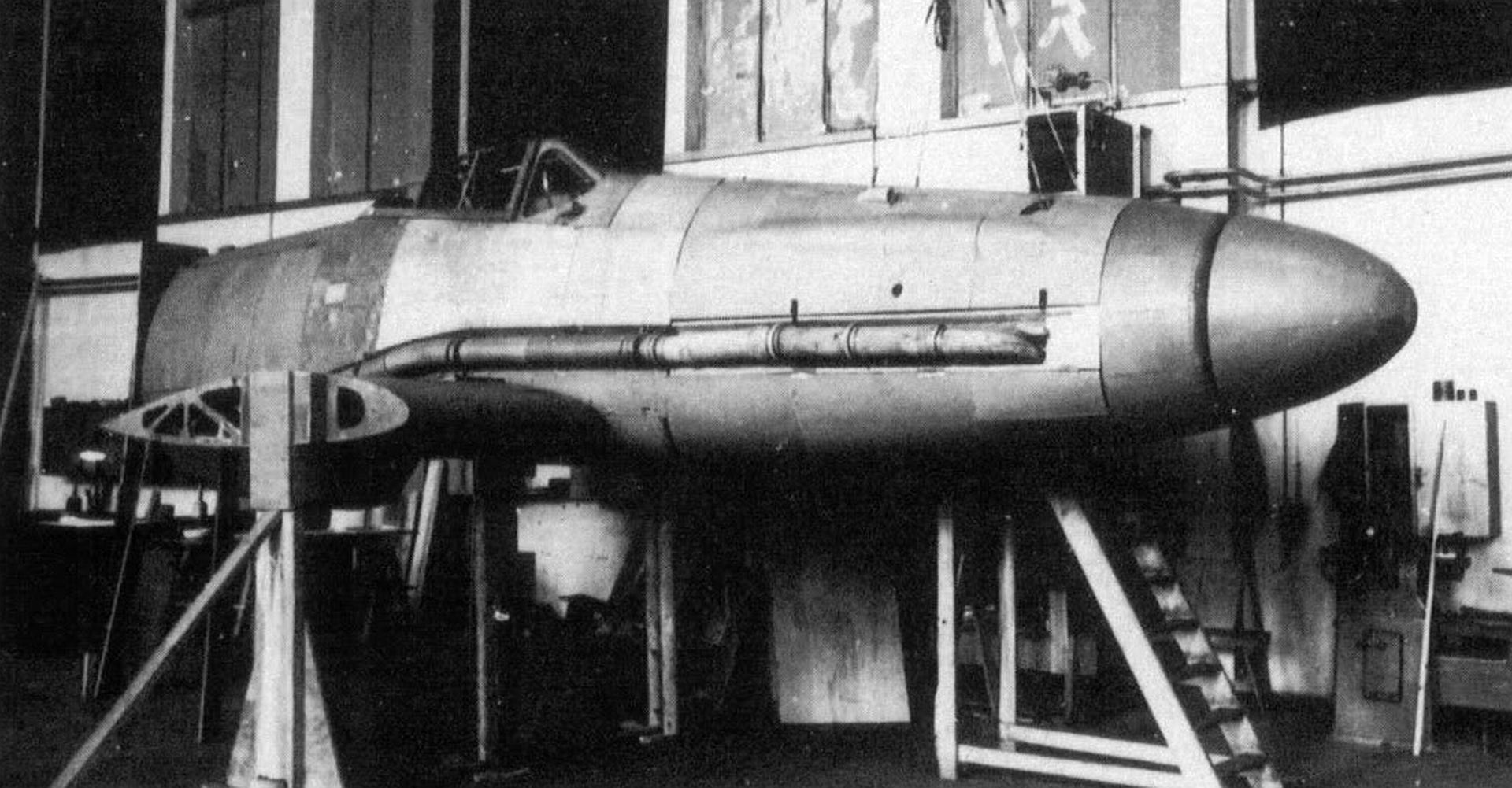
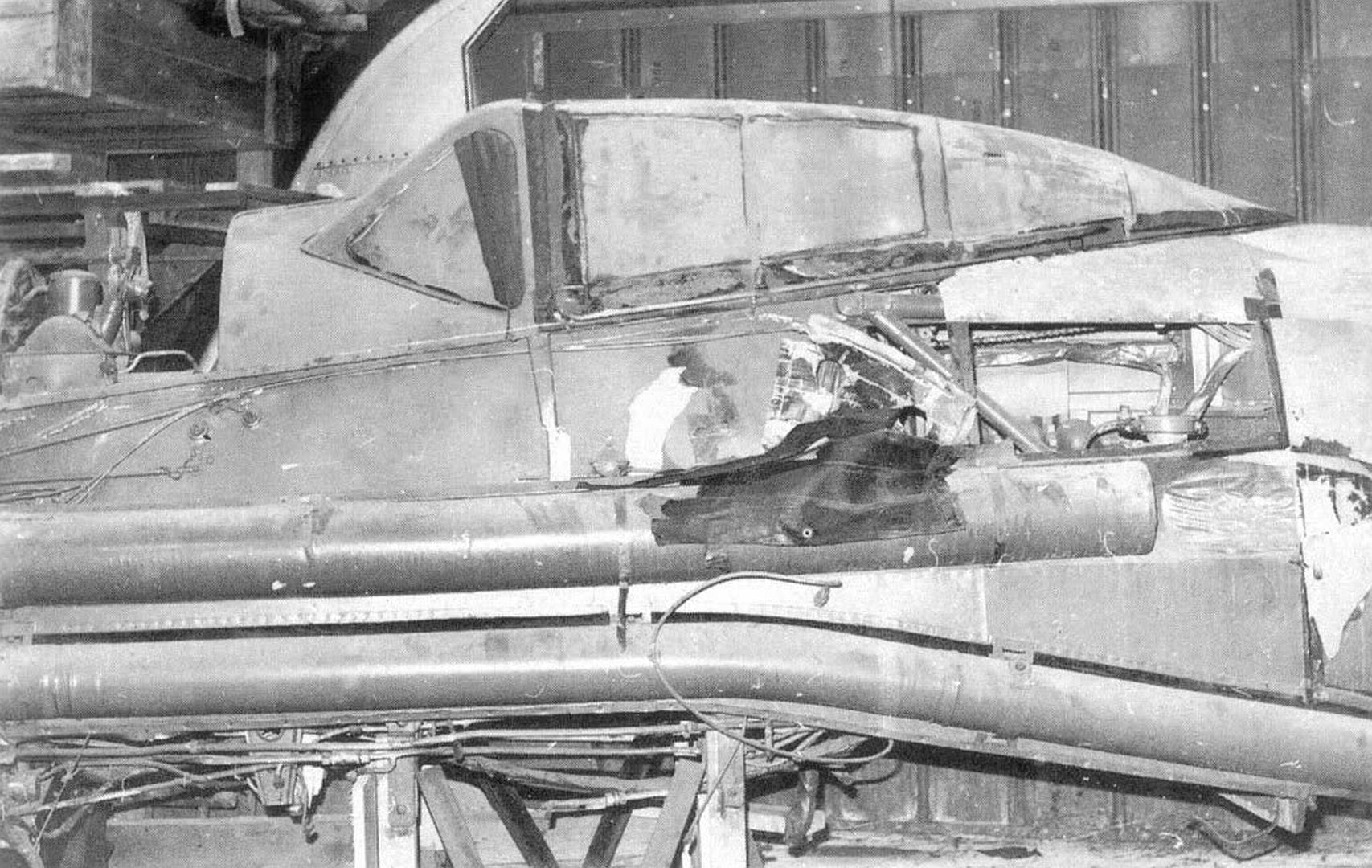
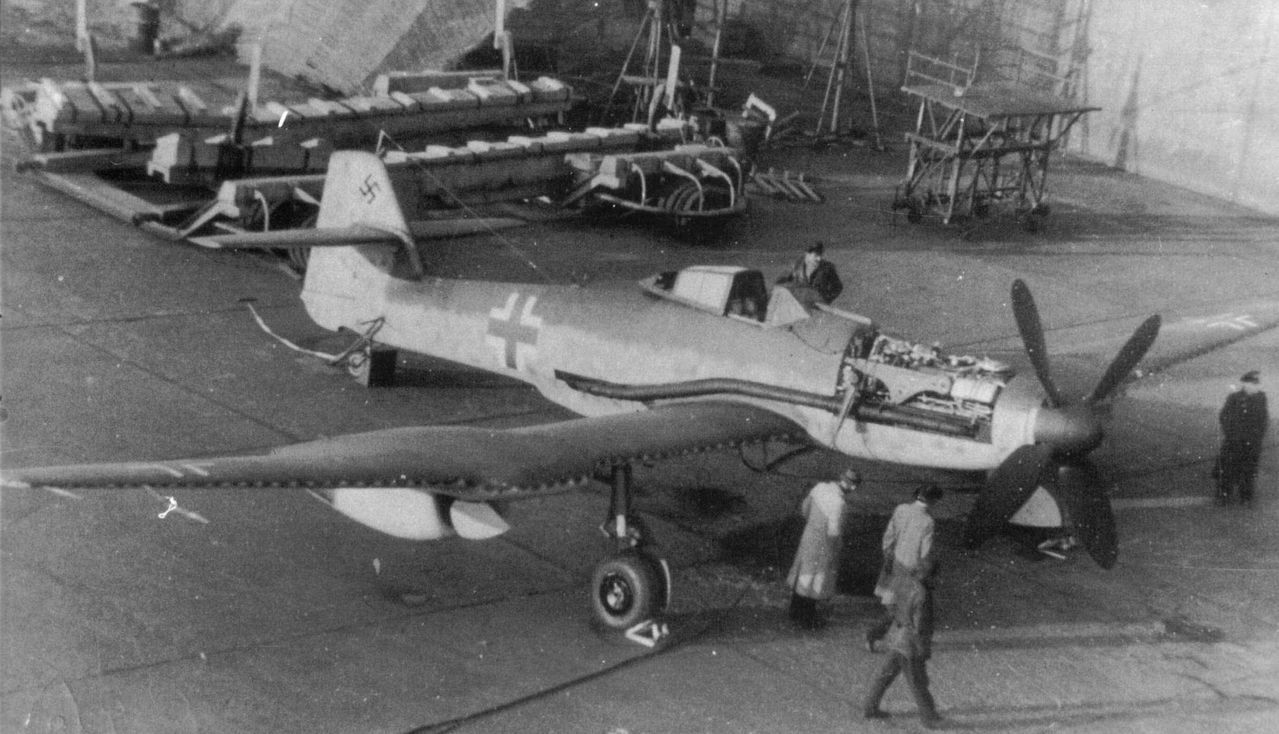
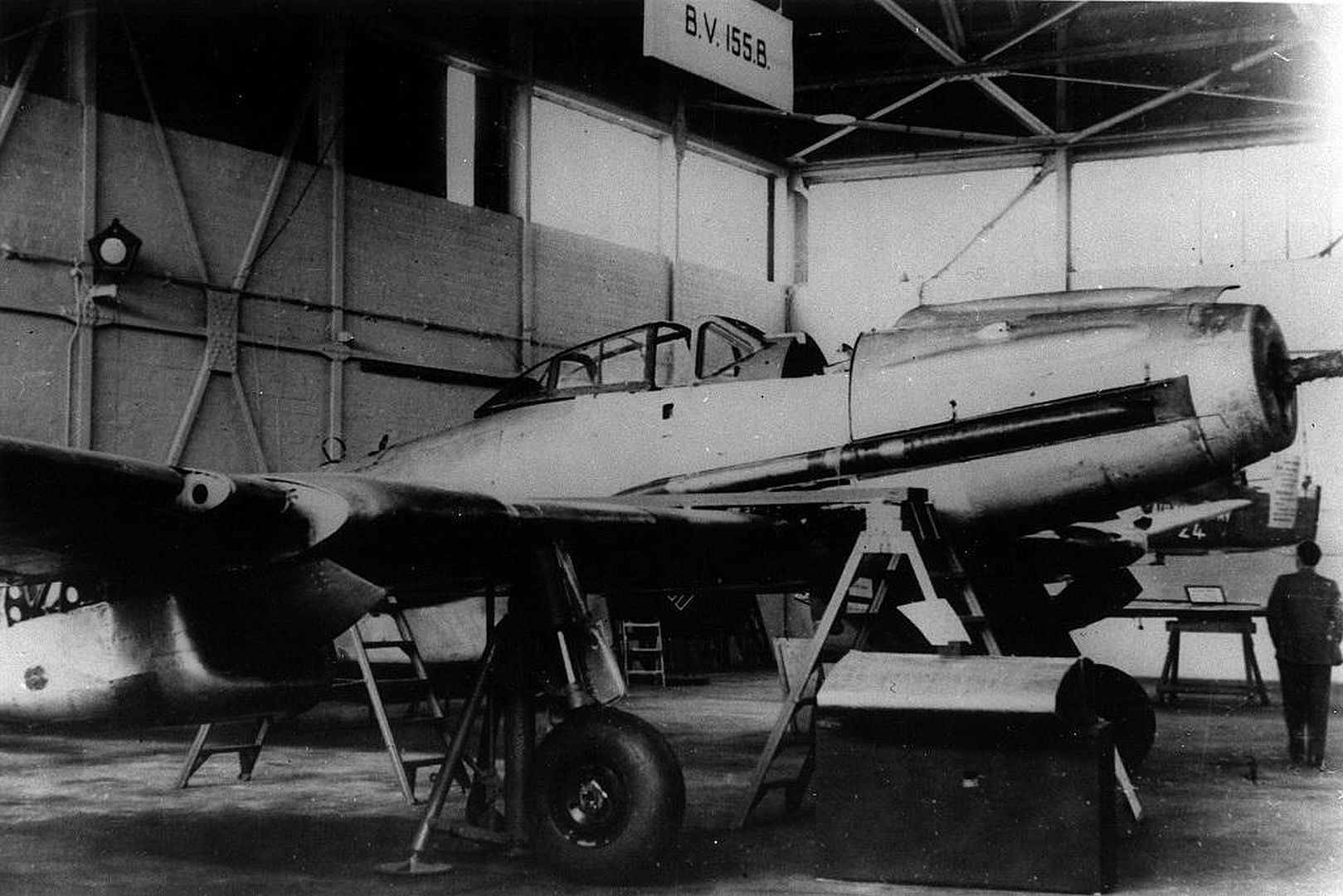
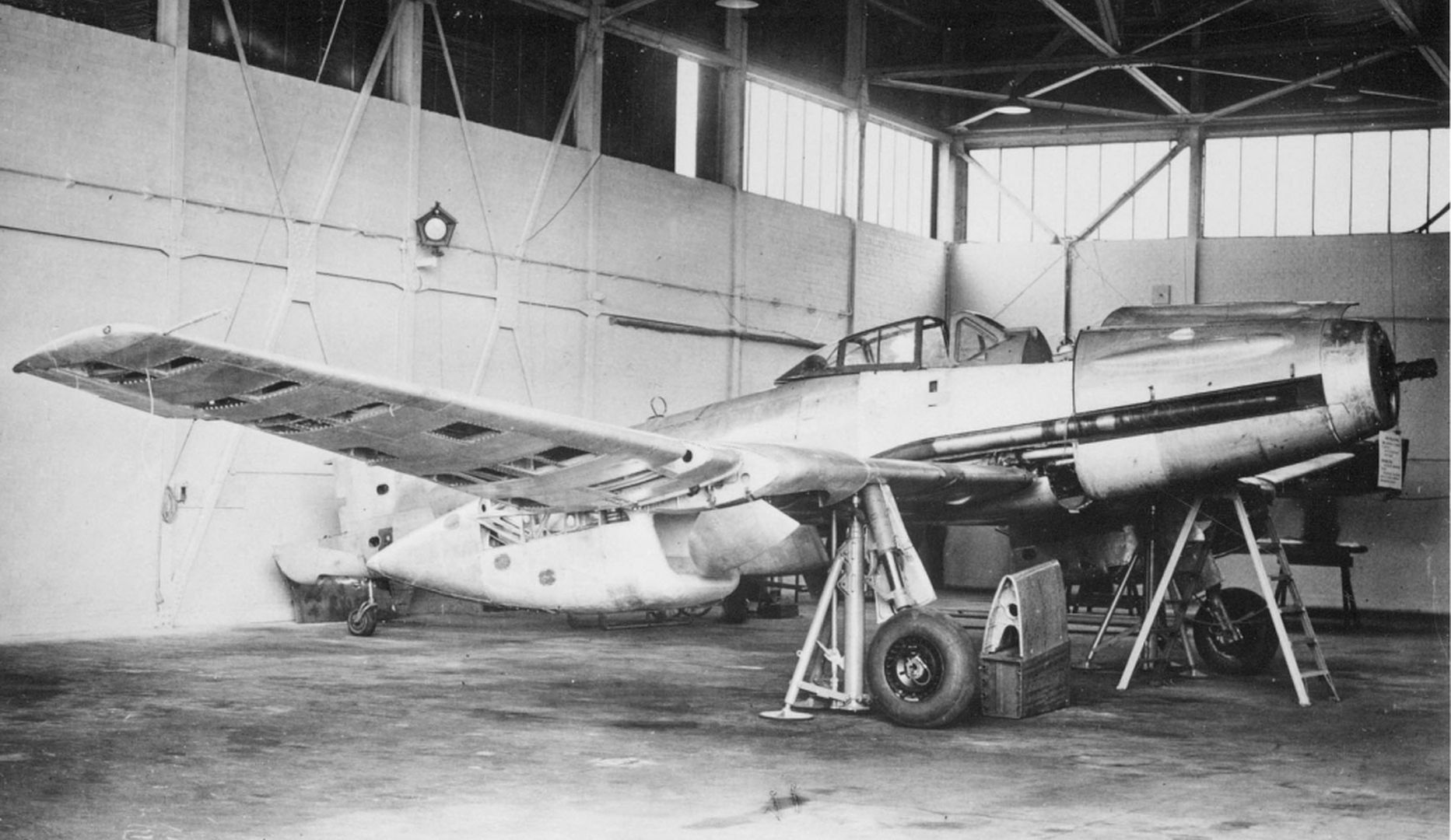
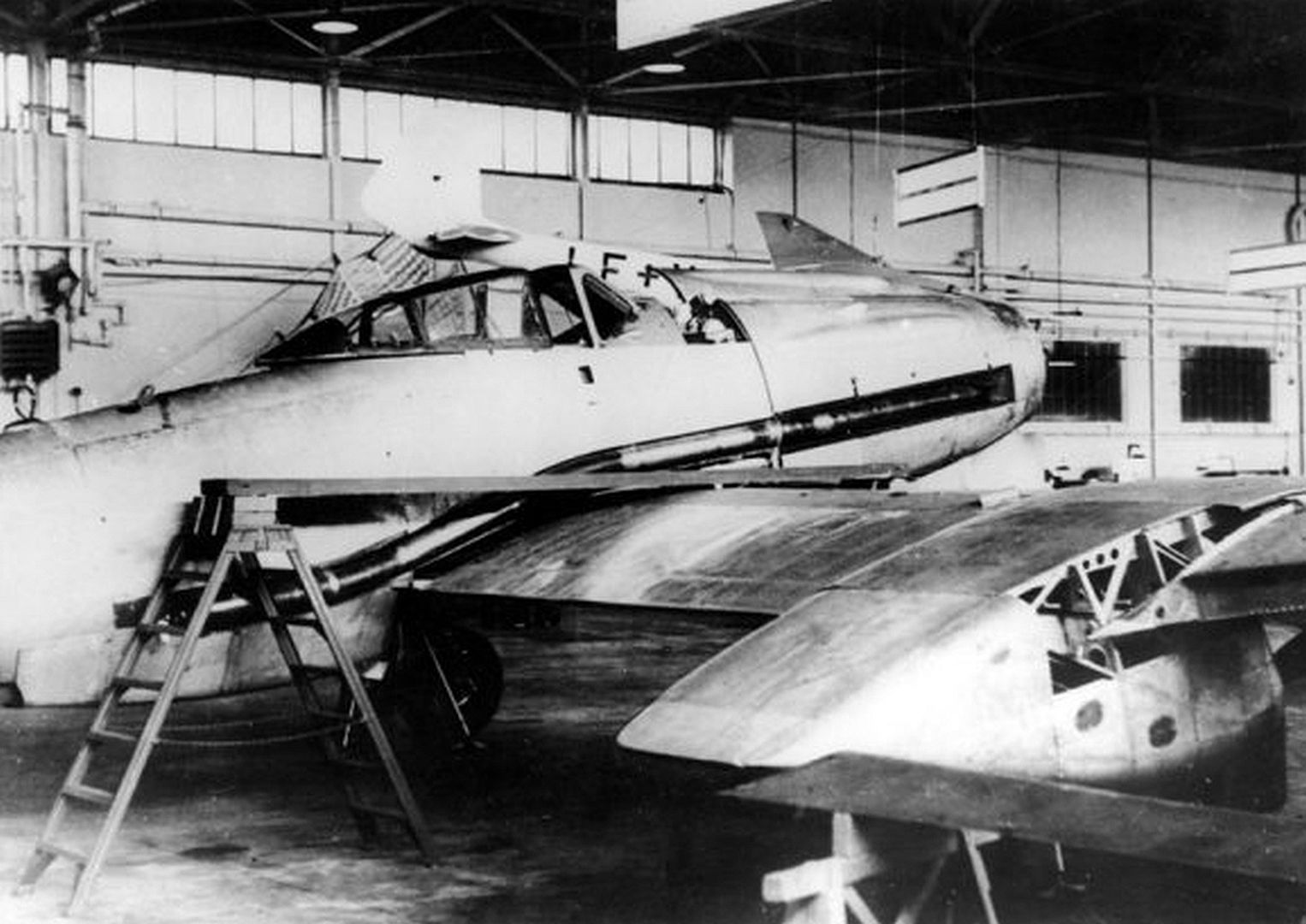
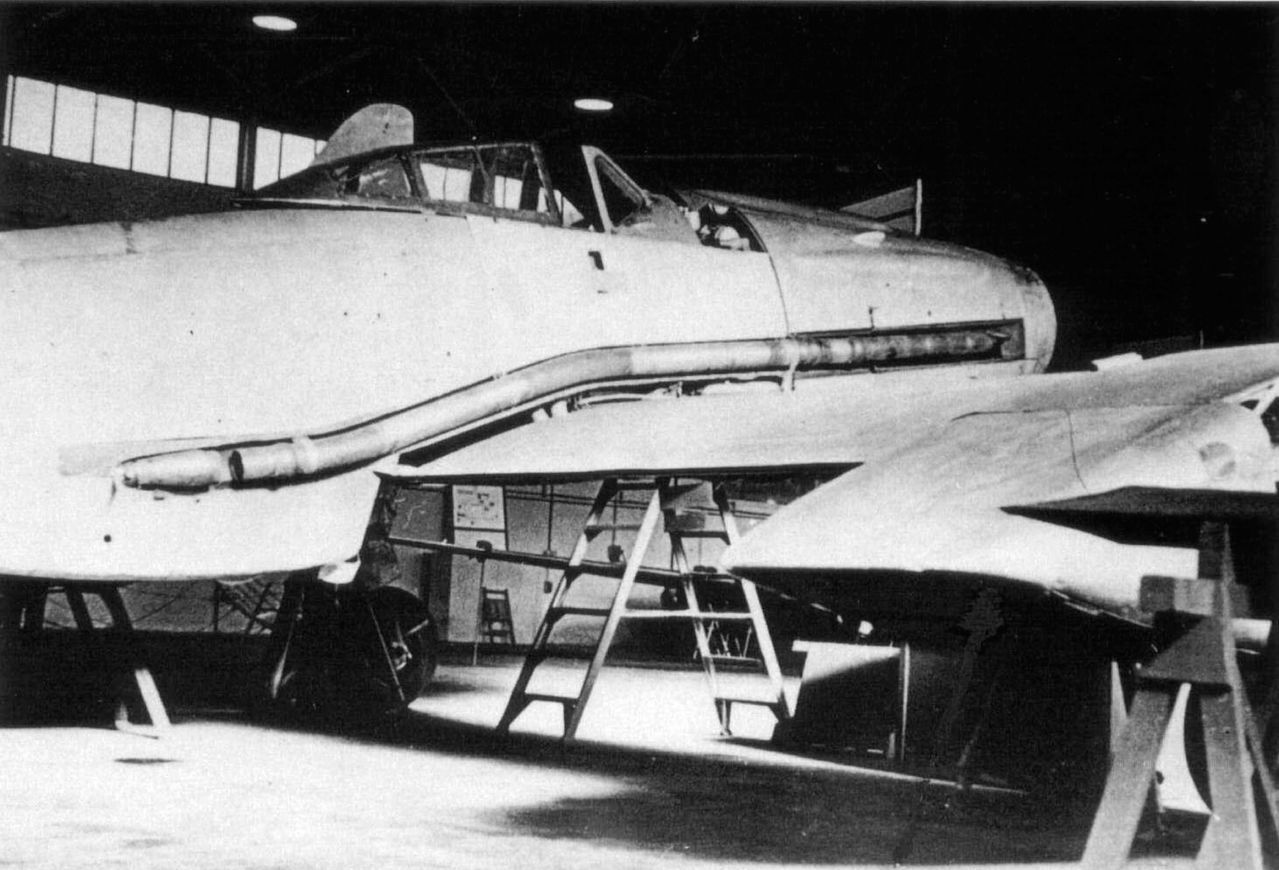
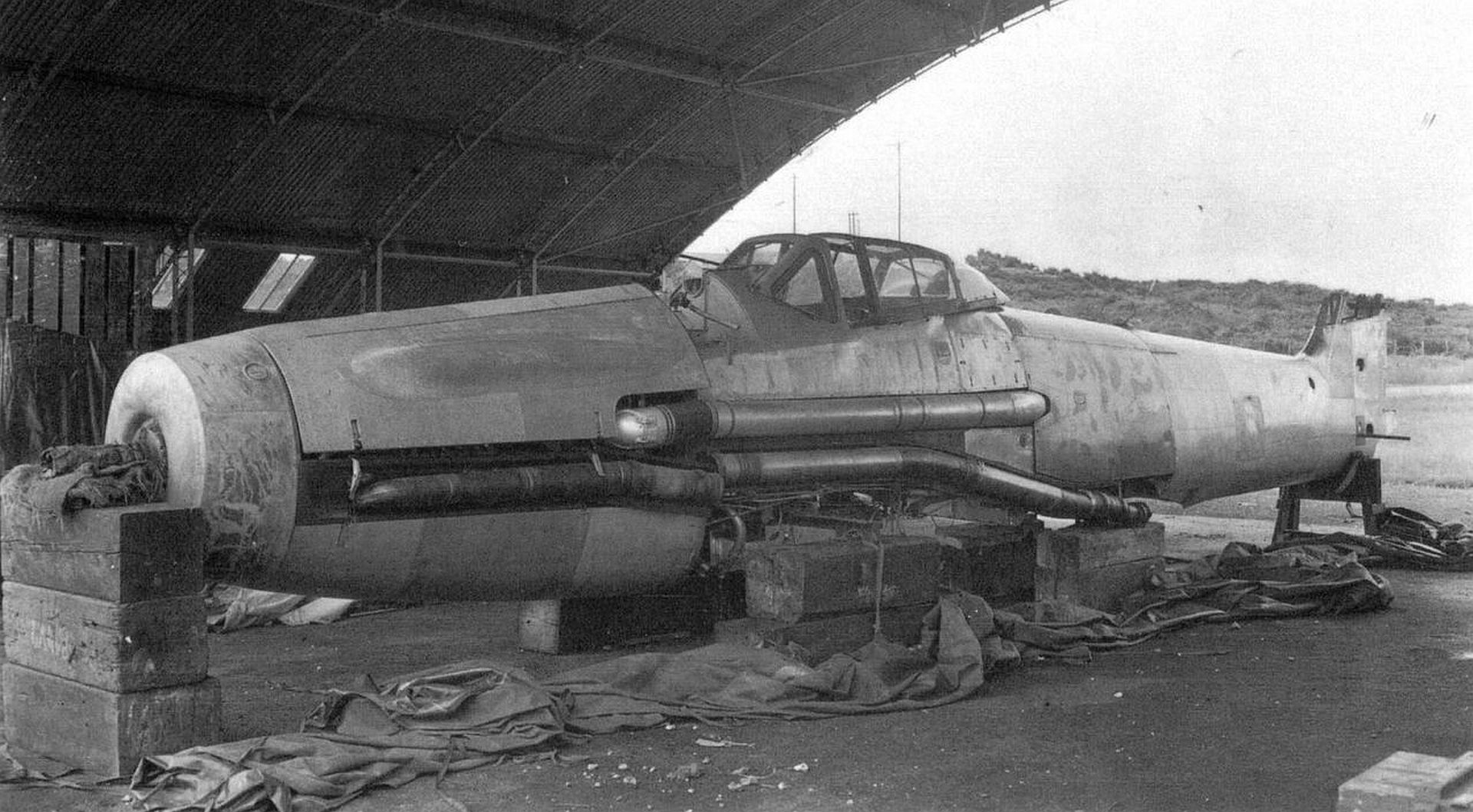
General characteristics 155B
Crew: 1
Length: 12 m (39 ft 4 in)
Wingspan: 20.5 m (67 ft 3 in)
Height: 3 m (9 ft 10 in)
Wing area: 39 m2 (420 sq ft)
Empty weight: 4,870 kg (10,737 lb)
Gross weight: 5,520 kg (12,170 lb) Proposal A
5,125 kg (11,299 lb) Proposal B
5,100 kg (11,244 lb) Proposal C
5,440 kg (11,993 lb) Proposal D
Max takeoff weight: 6,020 kg (13,272 lb)
Fuel capacity: 1,200 l (264 imp gal)
Powerplant: 1 ? Daimler-Benz DB 603A inverted V-12 liquid-cooled piston engine with TKL 15 turbo-charger, 1,200 kW (1,600 hp) for take-off
1,200 kW (1,609 hp) at 10,000 m (32,808 ft)
1,081 kW (1,450 hp) at 15,000 m (49,213 ft)
Propellers: 4-bladed constant speed paddle bladed propeller
Performance
Maximum speed: 420 km/h (261 mph; 227 kn) at sea level
520 km/h (323 mph) at 6,000 m (19,685 ft)
600 km/h (373 mph) at 10,000 m (32,808 ft)
650 km/h (404 mph) at 12,000 m (39,370 ft)
690 km/h (429 mph) at 16,000 m (52,493 ft)
Range: 460 km (286 mi; 248 nmi) at maximum continuous power with 595 l (131 imp gal) of fuel at sea level
560 km (348 mi) with 595 l (131 imp gal) of fuel at 10,000 m (32,808 ft)
590 km (367 mi) with 595 l (131 imp gal) of fuel at 16,000 m (52,493 ft)
1,080 km (671 mi) with 1,200 l (264 imp gal) of fuel at sea level
1,350 km (839 mi) with 1,200 l (264 imp gal) of fuel at 10,000 m (32,808 ft)
1,440 km (895 mi) with 1,200 l (264 imp gal) of fuel at 16,000 m (52,493 ft)
Service ceiling: 16,950 m (55,610 ft) service ceiling
maximum ceiling 17,100 m (56,102 ft)
Rate of climb: 11.5 m/s (2,260 ft/min) initial
3.92 m/s (13 ft/s) at 16,000 m (52,493 ft)
Time to altitude: 16,000 m (52,493 ft) in 29 minutes
Post a reply
- Go to Previous topic
- Go to Next topic
- Go to Welcome
- Go to Introduce Yourself
- Go to General Discussion
- Go to Screenshots, Images and Videos
- Go to Off topic
- Go to Works in Progress
- Go to Skinning Tips / Tutorials
- Go to Skin Requests
- Go to IJAAF Library
- Go to Luftwaffe Library
- Go to RAF Library
- Go to USAAF / USN Library
- Go to Misc Library
- Go to The Ops Room
- Go to Made in Germany
- Go to Campaigns and Missions
- Go to Works in Progress
- Go to Juri's Air-Raid Shelter
- Go to Campaigns and Missions
- Go to Works in Progress
- Go to Skinpacks
- Go to External Projects Discussion
- Go to Books & Resources
